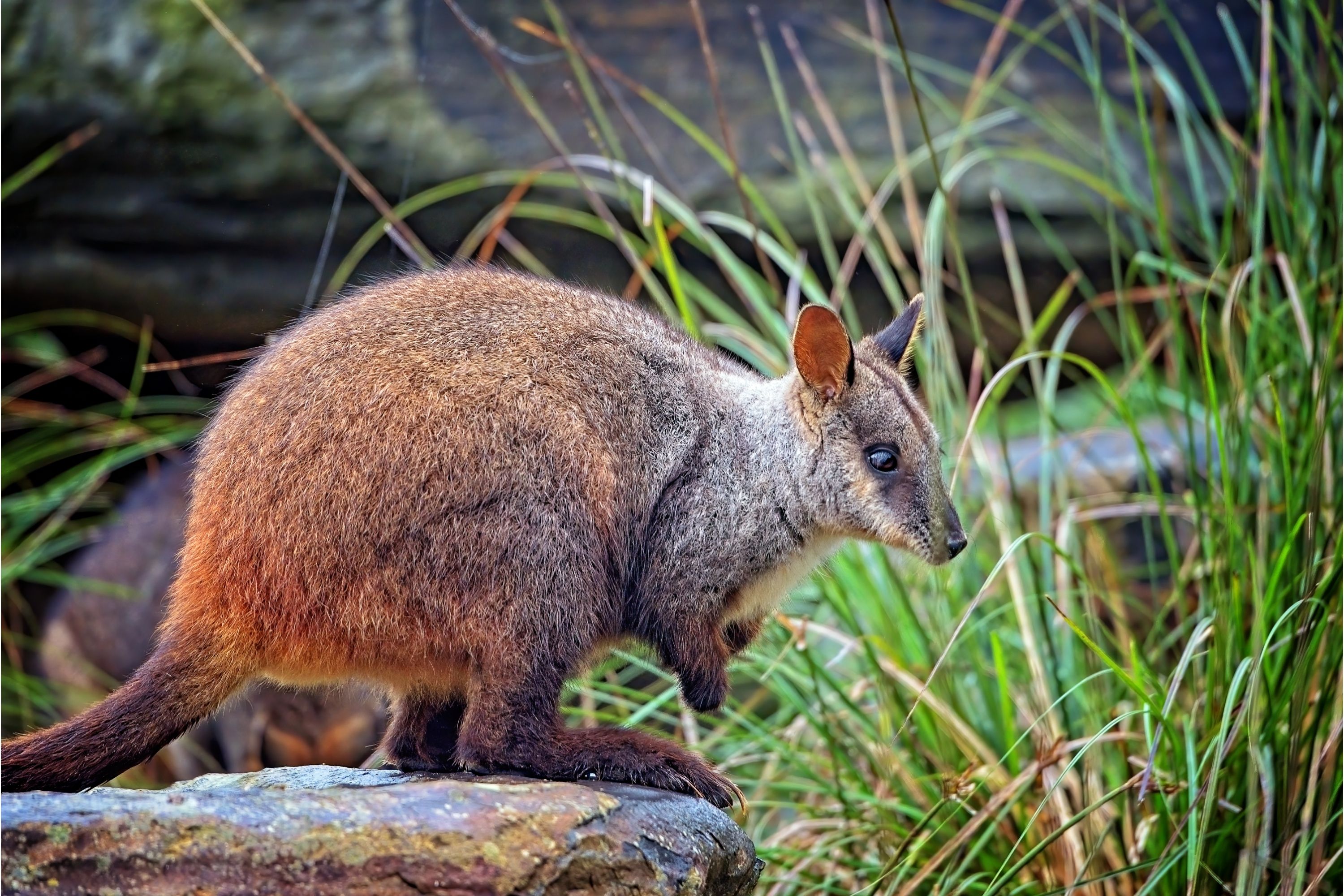Brush-tailed rock-wallaby
(Petrogale penicillata)

Description
The brush-tailed rock-wallaby or small-eared rock-wallaby (Petrogale penicillata) is a kind of wallaby, one of several rock-wallabies in the genus Petrogale. It inhabits rock piles and cliff lines along the Great Dividing Range from about 100 km north-west of Brisbane to northern Victoria, in vegetation ranging from rainforest to dry sclerophyl forests. Populations have declined seriously in the south and west of its range, but it remains locally common in northern New South Wales and southern Queensland. However, due to a large bushfire event in South-East Australia around 70% of all the wallaby's habitat has been lost as of January 2020. In 2018, the southern brush-tailed rock wallaby was declared as the official mammal emblem of the Australian Capital Territory (ACT), although it has not been seen in the wild in the ACT since 1959. A species of Petrogale, rock wallabies have a dense and shaggy pelage that is rufous or grey brown. The tail is 500 to 700 millimetres long, exceeding the 510 to 580 mm combined length of the head and body. The colour of the tail is brown or black, the fur becoming bushy towards its shaggy, brush-like end. The weight range is from 5 to 8 kilograms. The upper parts of this wallaby's pelage is either entirely rufous-brown, or a grey brown over the back and shoulders with brown fur at the thigh and rump. The paler under parts may feature a white blazon on the chest. Very dark fur covers the lower parts of the limbs, paws and feet, and on the sides beneath the fore limbs of the animal; a whitish stripe may appear along the side of the body. The coloration of the species in the northern parts of population is paler and fur is shorter in length. The black-footed and flanked species Petrogale lateralis, which occurs in central Australia, is distinguished by its larger size and the shorter and darker fur of the tail and hind parts. Herbert's rock-wallaby (P. herberti) overlaps in the northern range of this species, their coloration is greyer than the warm brown of this species and lighter at the darker features of the limbs; the tail of that species also lacks the blackish features and bushy end. The pads of the feet are well developed and their coarse texture allows good traction on rock surfaces.
Taxonomic tree:







